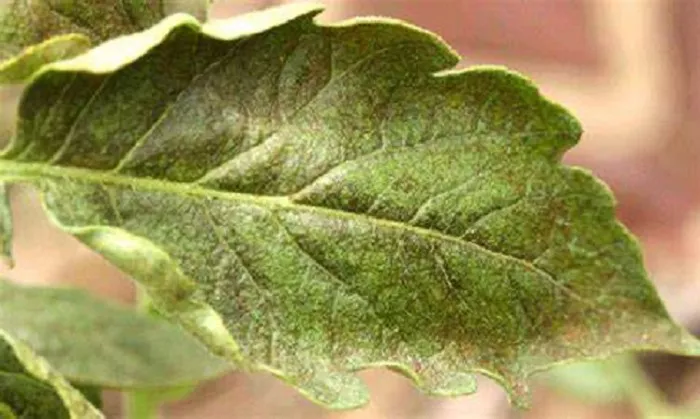Thrips are tiny but mighty pests that can wreak havoc in gardens. They feed on a wide range of plants, causing damage that can be both cosmetic and harmful to plant health. Understanding which plants are most susceptible to thrips can help gardeners take proactive measures to protect their beloved greenery. In this article, we will explore the types of plants that thrips target and provide insights on how to manage these pesky insects.
Common Targets of Thrips
Vegetable Crops
Thrips have a particular affinity for vegetable plants. They are often found on crops such as tomatoes, peppers, and cucumbers. These plants provide an ideal environment for thrips to thrive, with their tender leaves and flowers offering ample feeding opportunities. The damage caused by thrips on vegetable plants can lead to reduced yields and poor fruit quality. For example, on tomatoes, thrips can cause scarring on the fruit and distortion of leaves, which can stunt the plant’s growth.
Flowering Plants
Flowers are also a favorite target of thrips. Roses, marigolds, and petunias are particularly vulnerable. Thrips are attracted to the nectar and pollen of flowers, where they feed and lay their eggs. The damage they cause can be quite noticeable, with petals appearing discolored or deformed. In severe cases, the flowers may fail to open properly, affecting the plant’s ability to reproduce and diminishing its aesthetic appeal.
Fruit Trees
Fruit trees are not immune to thrips attacks. Apple, pear, and cherry trees can all suffer from infestations. Thrips can damage the buds and young leaves, leading to reduced fruit production. The scarring and distortion of leaves can also weaken the tree, making it more susceptible to other diseases and pests. Early detection and management are crucial to protect fruit trees from significant damage.
Herbs
Herbs such as basil, parsley, and cilantro are also on the thrips’ menu. These plants are often grown for their aromatic leaves, which can be damaged by thrips feeding. The damage can reduce the quality and quantity of the harvest. Additionally, the presence of thrips can introduce other problems, such as the spread of viruses, which can further harm the plants.
Factors Influencing Thrips Infestation
Plant Characteristics
Certain plant characteristics make them more attractive to thrips. Plants with soft, succulent leaves and abundant flowers are particularly appealing. Thrips are also drawn to plants with a high sugar content in their sap. Understanding these characteristics can help gardeners choose more resistant varieties or take steps to protect vulnerable plants.
Environmental Conditions
Environmental factors play a significant role in thrips infestations. Warm, dry weather conditions are ideal for thrips, allowing them to reproduce rapidly. In contrast, cool, wet conditions can help keep thrips populations in check. Gardeners should be vigilant during periods of favorable weather for thrips and take preventive measures to protect their plants.
Cultural Practices
The way plants are grown and cared for can also influence thrips infestations. Overcrowded plants with poor air circulatio7n are more likely to attract thrips. Regular pruning and proper spacing can help reduce the risk of infestation. Additionally, maintaining a clean garden by removing debris and fallen leaves can eliminate potential hiding spots for thrips.
Managing Thrips Infestations
Biological Control
One effective way to manage thrips is through biological control. Introducing natural predators such as ladybugs, lacewings, and predatory mites can help keep thrips populations in check. These beneficial insects feed on thrips, reducing their numbers without the need for chemical interventions.
Cultural Practices
Implementing good cultural practices is essential for managing thrips. Regularly inspecting plants for signs of infestation can help catch problems early. Pruning affected leaves and flowers can help reduce the spread of thrips. Additionally, using reflective mulches can deter thrips from landing on plants.
Chemical Control
In cases where biological and cultural controls are insufficient, chemical treatments may be necessary. Insecticides specifically targeting thrips can be effective, but they should be used judiciously to avoid harming beneficial insects. Always follow the instructions on the label and consider using organic or less toxic options whenever possible.
Preventive Measures
Choosing Resistant Varieties
Selecting plant varieties that are resistant to thrips can be a proactive approach to pest management. Some plant varieties have been bred to be less attractive to thrips or to withstand their feeding damage. Researching and choosing these varieties can help reduce the risk of infestation.
Regular Monitoring
Regularly monitoring plants for signs of thrips is crucial. Early detection allows for timely intervention, preventing the problem from becoming severe. Look for signs such as discolored leaves, deformed flowers, and the presence of tiny, dark insects on the plants.
Maintaining a Healthy Garden
A healthy garden is less likely to attract pests. Providing plants with the right amount of water, nutrients, and sunlight can help them grow strong and resilient. Healthy plants are better able to withstand pest attacks and recover more quickly.
Conclusion
Thrips are a common garden pest that can cause significant damage to a wide variety of plants. By understanding which plants are most susceptible and taking proactive measures to protect them, gardeners can minimize the impact of thrips infestations. Implementing a combination of biological, cultural, and chemical controls can help keep thrips populations in check, ensuring a healthy and thriving garden.


